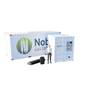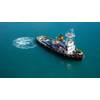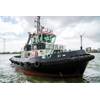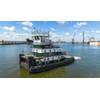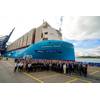Volvo Penta Equips Stockholm's New Patrol Boat
Stockholm’s Maritime Police Section has recently taken delivery of a high-speed Marell M15 patrol boat, equipped with a fully integrated propulsion system – Volvo Penta’s latest D6 engine, DPI drive and navigation system. The new vessel was handed over on June 11 at Swedish boatbuilder Marell’s headquarters in Östhammar, some 135 kilometers north of Stockholm.
Volvo Penta’s latest D6-440 DPI propulsion system is the power behind the new 15-meter fast patrol boat. Equipped with twin D6-440 DPI sterndrives, the Marell M15 has a top speed of 45 knots and includes a fully integrated system from Volvo Penta, including its Electronic Vessel Control (EVC2) and Glass Cockpit System.
The D6-440 DPI sterndrives – together with the marine engine’s high torque at lower rpm – creates a vessel with good ‘grip’ in the water, which in turn gives extremely high acceleration, cruising speeds of between 30 and 40 knots and safe high-speed turns. Thanks to the fact that the D6-440 DPI takes a full system approach, the joystick is connected to the propulsion system, transforming the driver's joystick movements into precise steering angles, gear shifts and throttle positions.
The navigator and helmsman sit in an ergonomically designed cabin equipped with the latest Volvo Penta technology – the Electronic Vessel Control 2 system (EVC2) and Glass Cockpit System. The new EVC2 system has been designed with the complete boat in mind. Integrated with the EVC2 is the Glass Cockpit System, which provides a full overview and control of navigation and propulsion data, together with options for Autopilot.
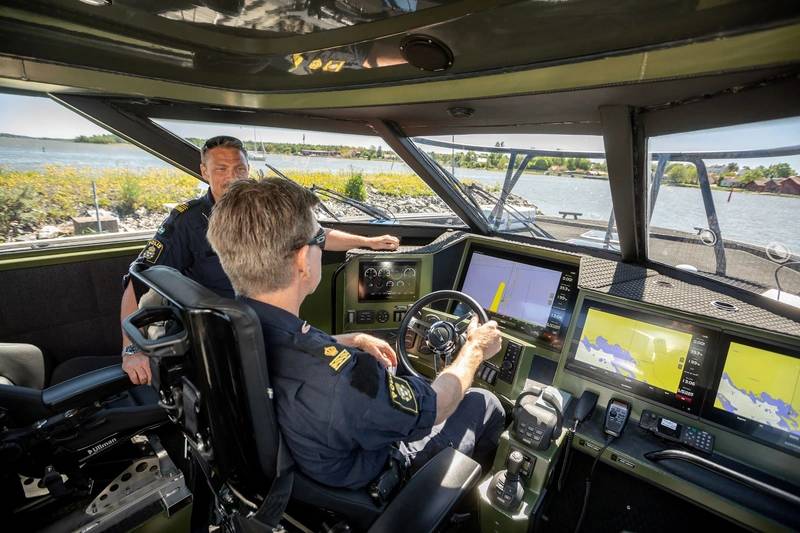 (Photo: Volvo Penta)
(Photo: Volvo Penta)
“This is a very positive development, as on our other boats we have to operate multiple systems independently,” says Police Inspector Johan Skogfeldt. A 27-year career officer, Inspector Skogfeldt has been working for the Stockholm’s Maritime Police Section since 2008, and was responsible for the procurement of the Marell. “To have everything in one unified system will be a great advantage. It looks fantastic and provides an excellent working environment – even the ability to swap roles between navigator and helmsman without changing seats will be useful.”
“In a vessel designed for high speed patrol duties – in any type of weather or darkness – these control systems are a significant advantage,” agrees Jonas Karnerfors, Sales Project Manager at Volvo Penta. “In fact, this entire application is an excellent demonstration of the D6-440 DPI propulsion system in a demanding marine application.”
The Marell M15 is designed and built by Marell Boats and based on production techniques derived from over 30 years of aluminum boat building. The yard owner, Patrik Söderholm, says, “With the center steering position – a hallmark of Marell boats – the helmsman is in full control of the situation along both sides of the vessel, independent of turning direction, heel or speed. This improves safety for both crew and the boat’s surroundings.”
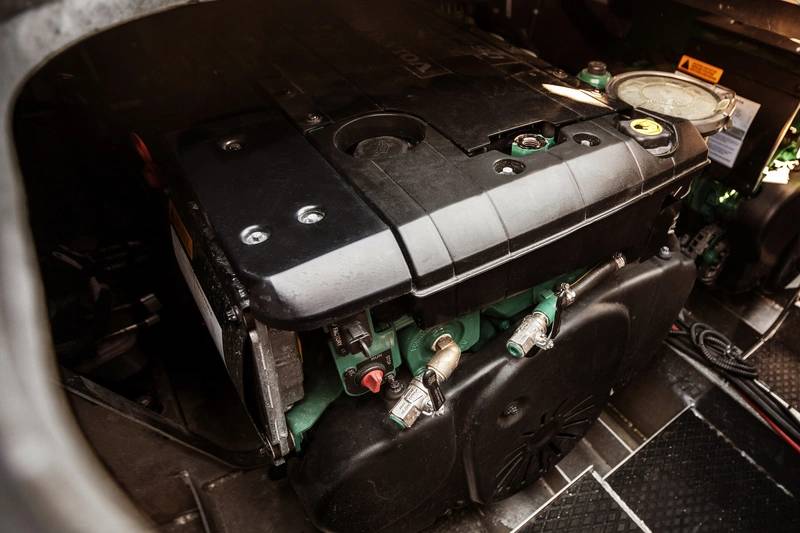 (Photo: Volvo Penta)
(Photo: Volvo Penta)
“We were looking for a vessel that could perform well in rough waters, be comfortable and not tiring for the crew over an eight-hour shift. And be able to do that shift after shift for months on end,” says Inspector Skogfeldt.
“Unlike most of our other vessels, the Marell is built and approved for offshore operations, and has the power and performance to excel in demanding waters,” continues Inspector Skogfeldt. “The other boats we use have water jets for propulsion, but this can cause problems when trying to lift people from the water, as there is so much turbulence around the boat when trying to stay still in the water. The calmer waters created by the Volvo Penta sterndrive fitted to the Marell will make this work far easier. This is helped by the fact that the D6 sits low in the boat, meaning the rear deck can be lower, an asset when getting survivors out of the water and for our diving teams to operate from.
“My team are excited about this boat joining our fleet,” concludes Inspector Skogfledt. “It looks great and we are confident it will perform well in demanding sea conditions.”



